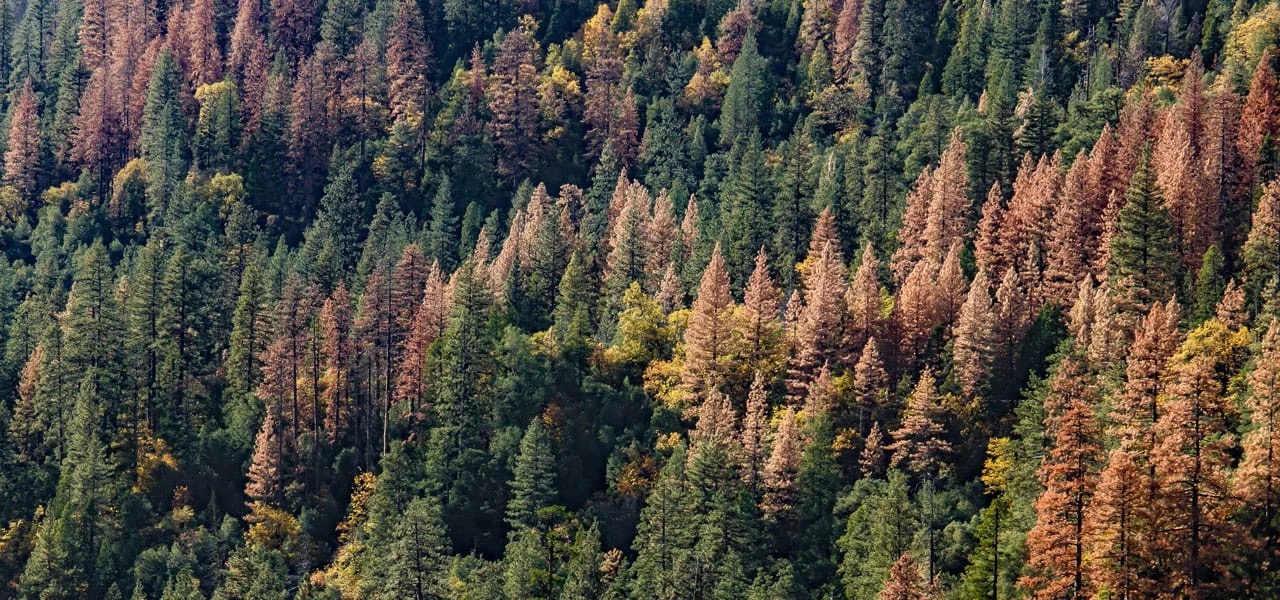Late winter weather can be highly variable in the Denver foothills. Some years we get a lot of snow in March and April, making it hard to believe that spring officially starts at the end of March. Other years, it feels like spring has already arrived in February!
Either way, late February to early March is a good time to check trees for any damage caused over the winter and take steps to prepare them for the upcoming warm season.
Below are some things we recommend doing in your yard in late winter, as well as important tree care issues to address before spring arrives in full force.
Continue to Inspect Regularly
- Check all of your trees for potential hazards – If you’re uncertain about anything, give us a call and we’ll be happy to inspect it for you.
- Inspect hardware in trees – If your trees have been cabled, the hardware should be inspected every few years to be sure it’s intact, in good condition and that nothing needs to be adjusted or replaced due to the tree’s growth. Late winter (before things start growing) is a good time for that inspection.
- Check for frost heaving on perennials – If you notice plants whose roots have risen out of the ground, try push them back into the soil and then cover them with extra mulch.
Check for Damage & Signs of Pests
- Examine smaller trees for signs of rodent damage – Rodents burrow under snow to gnaw on the tender bark of young trees. Pull away snow from the tree base to look for damage. Use baits or traps where necessary, and wrap the bottom of susceptible trees with tree wrap (be sure to remove it when the snow melts for good).
- Watch out for deer, elk and moose – These critters can do enormous damage during the winter; when we have significant snow cover they’re often hungry enough to eat almost anything. Use repellent spray, fencing or netting to protect your prized trees and shrubs.
- Check for insect pests – Check the bark and branches of ornamental trees and shrubs for scale insects and pitch tubes (these are common signs of mountain pine beetle infestation).
- Be careful when checking your trees – Please don’t climb up tall trees yourself! Let us take a look (we’re experienced professionals who use the right safety gear to keep everyone safe) and, if needed, we can apply the proper treatment.
Continue Watering Newly Planted Trees
- Even though it’s still winter, trees still need water – particularly if they’ve been planted within the last five years. If the ground is clear of snow cover and dry, water thoroughly. As long as the ground isn’t frozen, the tree can take up moisture to keep it hydrated through the winter. See our article on winter watering for details about when and how to do this.
Prune While Trees Are Dormant
- Consider rejuvenation pruning – Late winter is a great time for major pruning or rejuvenation of high profile, overgrown plants. They’ll be able to recover quickly in spring with new growth so you won’t have a bare spot in the landscape for long. But be sure to wait until the risk of single-digit temperatures has passed.
- Prune promptly – Any tree and shrub limbs damaged by ice or snow should be pruned off promptly to prevent bark from tearing. Any dead, damaged or diseased branches should ideally be removed before they start to bud out.
- Prune trees that benefit from dormant pruning – Some trees are best pruned during the winter months (before bud break). Learn about the benefits of winter pruning here >>
Plan Ahead
- Schedule preventive treatments – Make sure you have a program in place to deal with common tree pests and diseases (like Ips beetles, mountain pine beetles and aspen leaf blight) – you’ll want to get some of those treatments done as soon as weather warms up in March so get it on the schedule now. See our Plant Health Care page for details on the appropriate timing for treatments.
- Start planning for spring – Plan your landscape needs before the spring “rush” to ensure the best service and the best plant material if you will be installing plants.
Be “Winter Weather Wise”
- In case of a thaw – Don’t be fooled by warming weather – it’s still winter! Hold off on most yard work until temperatures hold steady and the ground has dried out a bit – digging in wet soil will destroy soil texture and harm your plants.
- Don’t remove ice – In case of freezing rain, allow ice to melt off your plants naturally. Attempting to remove ice can damage the plants.
- Gently brush off heavy snows – Don’t shake tree or shrubs branches or hit them with a broom or shovel as they could break.
- On icy paths and driveways – Scatter sand, bird seed, sawdust, cat litter or vermiculite to avoid slipping. Avoid salt or ice melters as these may injure plants.
Late winter weather in the Front Range can be unpredictable, with extremes ranging from sunny 70+F days to 3-foot snowfalls. It’s always good to be prepared by knowing what to do when weather is good, understanding what to look for when bad weather hits, and planning ahead for when spring really does arrive.



